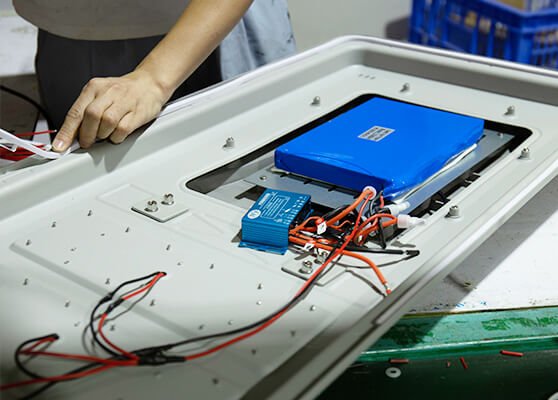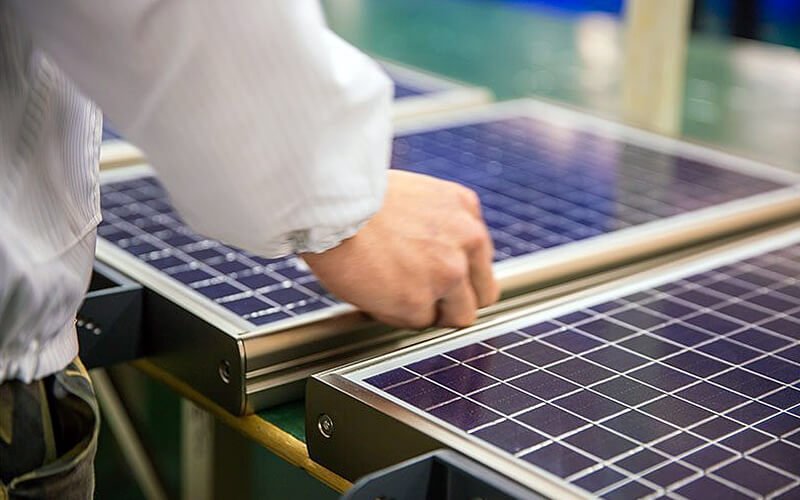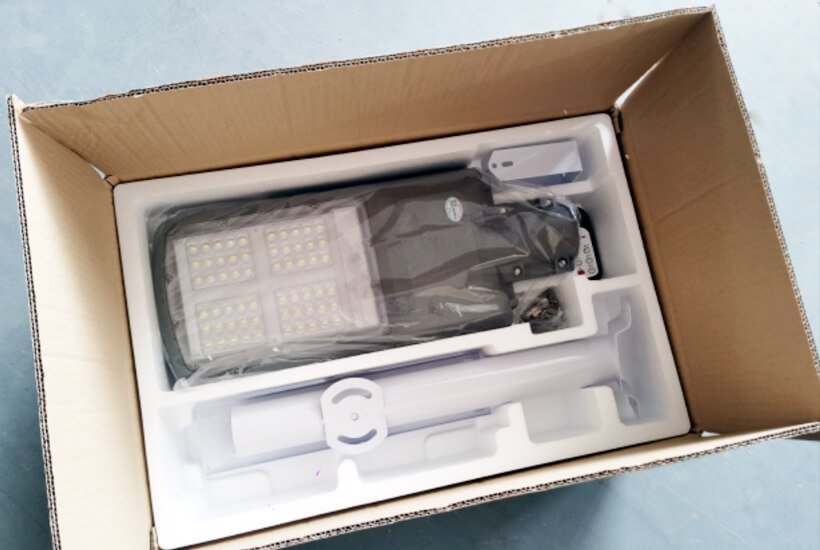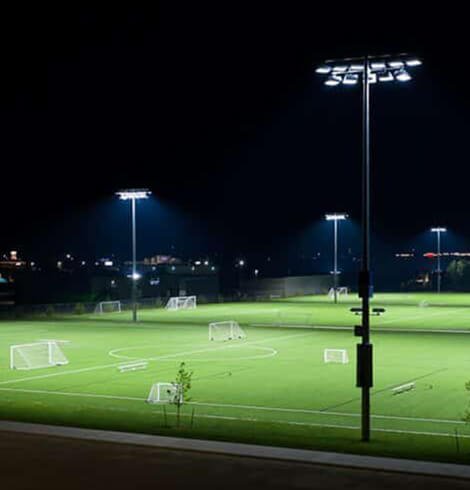As we step into 2024, the demand for sustainable and cost-effective lighting solutions continues to rise. Solar street lights have proven to be a game-changer, especially for urban and rural areas. If you are ready to source solar street lights from China, it’s crucial to understand what to look for to ensure you get the best quality and value.
Today, I will guide you through the 10 must-known factors to consider when buying solar street lights.
1. Light Source
Let’s begin with the light source. The light source is the heart of your solar street light. It’s not just about the brightness but also about efficiency and longevity. You can start by checking the lumen output and color temperature.

Lumen Output and Efficiency
Lumen output and efficiency are critical aspects of lighting performance. This tells you how bright the light will be and how efficiently it converts power into light. Higher lumens per watt mean better efficiency.
Lumen measures the total amount of visible light emitted by a source. It’s a way to quantify brightness. LED bulbs range from 450 lumens (comparable to a 40W incandescent bulb) to 1600 lumens (comparable to a 100W incandescent bulb) and beyond for higher power applications.
Lumen efficiency measures how efficiently a light source converts electrical energy into light. It’s the number of lumens produced per watt of electrical power consumed. Efficient light sources, such as LEDs Solaroglo use in solar street lights, tend to have longer lifespans, reducing replacement costs and maintenance.
Color Temperature
Next, consider the color temperature, which affects the ambiance and visibility. Typically, solar street lights color temperature range from 3000K (warm white) to 6500K (cool white). Choosing the right color temperature for solar street lights ensures that you provide safe, effective, and environmentally considerate lighting for your specific application.
For example, cooler temperatures (4000K-6000K) is great for highways and main roads, because their better visibility and safety. And warmer temperatures (2700K-3000K) is great for a more pleasant and less instructive light in residential streets, parks, and recreation areas, for it can create a relaxing environment.
2. Battery
The battery is the powerhouse of your solar street light. It stores the energy collected by the solar panel and determines how long your light will stay on.

Battery Type
When choosing batteries for solar street lights, the main types include Lead-Acid, Lithium-Ion, Lithium Iron Phosphate (LiFePO4), Nickel-Cadmium (Ni-Cd), and Nickel-Metal Hydride (Ni-MH). Lead-Acid batteries are cost-effective but heavy and maintenance-intensive, with a shorter lifespan.
Lithium-ion batteries are preferred over lead-acid batteries due to their longer lifespan, higher energy density, and better performance in various temperatures. LiFePO4 batteries provide excellent safety, longevity, and efficiency, making them ideal for high-performance applications despite higher costs. Ni-Cd batteries are durable and handle extreme temperatures well but are environmentally hazardous. Ni-MH batteries are more environmentally friendly but less durable and efficient than LiFePO4 and Lithium-Ion options.
You can choose the best option according to your budget, performance requirements, and environmental conditions.
Battery Capacity and Cycle Life
Check the battery capacity to ensure it can store enough energy to power the light throughout the night. Also, verify the cycle life, which indicates how many charge and discharge cycles the battery can handle before its capacity significantly decreases.
Charge Controller Quality
The charge controller manages the charging and discharging of the battery. Therefore, it’s better to ensure that it is of high quality and has features like overcharge and over-discharge protection.
3. Solar Panel
Now, let’s talk about the solar panel. The solar panel is the component that captures sunlight and converts it into electrical energy. Its efficiency and quality are very important for a solar street light.

Panel Wattage and Efficiency
The wattage of a solar panel tells you how much energy it can produce. Higher efficiency panels can make more energy even if they are smaller. Choosing a panel with enough wattage to fully charge your battery during the daylight hours is important.
Quality of Solar Cells
It’s important to check the quality of the solar cells used in a panel. Monocrystalline cells are typically better because they are more efficient at converting sunlight into electricity and they tend to last longer than polycrystalline cells.
Proper Tilt Angle
The proper tilt angle for a solar street light is essential because it maximizes sunlight absorption, ensuring efficient energy conversion for better battery charging and extended operational hours. This optimization enhances performance, extends the system’s lifespan, and promotes cost-effectiveness while reducing environmental impact through increased renewable energy use.
4. Overall Build Quality
Other than the light source, battery, and solar panel, the build quality of a solar street light also determines its durability and ability to withstand various weather conditions. A sturdy construction ensures durability against harsh weather, enhances reliability by reducing the risk of breakdowns, and promotes safety in outdoor settings.
Quality materials and components also contribute to efficiency, maximizing energy capture and minimizing maintenance costs over time. While higher initial costs may be involved, the long-term benefits include reliable operation, cost-effectiveness, and a reduced environmental footprint through efficient use of renewable energy. You can check the overall build quality with the IP rating, housing material and heat dissipation design of the solar street light.
IP Rating
IP rating indicates the light’s resistance to water and dust. An IP65 rating or higher is recommended for outdoor solar street lights to ensure durability in various weather conditions.

Housing Material
The housing material for a solar street light should be robust and corrosion-resistant. Aluminum alloy is preferred due to its lightweight, strength, and resistance to rust.
Heat Dissipation Design
Apart from the physical protection, proper heat dissipation is essential to prevent overheating and ensure the longevity of the solar light LED chips and other components.
5. Smart Controls
Another way you can enhance the efficiency and functionality of your solar street lights is smart controls. Smart controls for solar street lights bring advanced features to enhance their efficiency and performance.
For example, with remote control capabilities, you can easily manage and monitor lights from anywhere via the internet. Motion sensors automatically adjust brightness when they detect movement, ensuring energy savings without compromising safety. Additionally, adaptive lighting adjusts the light intensity based on ambient conditions, and automated scheduling allows lights to follow preset on/off times for optimal use.
By analyzing usage and performance data, these smart controls help you improve the overall efficiency and reliability of solar street lighting systems.
6. Certifications
So far, we’ve discussed every aspect of how to choose a solar street light, from the light source, to the battery, and the housing. When purchasing solar street lights, choosing a reliable supplier can also be tricky.
If you want the fastest way to filter suppliers, certifications are essential as they indicate compliance with safety and quality standards. Common certifications that a solar street light factory needs to fulfill include CE, RoHS, IP Rating for the product, and ISO certification for factory.
CE, RoHS, IP Ratings
Ensure that the solar street lights have the necessary certifications like CE, RoHS, and appropriate IP ratings. These certifications indicate compliance with safety and quality standards.
ISO 9001 Certified Manufacturers
Look for manufacturers that are ISO 9001 certified, as this certification indicates a quality management system that meets international standards.
7. Warranty and After-Sales Support
When dealing with an electronics product like solar street light, a good warranty, and reliable after-sales support are crucial for long-term satisfaction with your procurement.
Warranty Period
Firstly, you can check the warranty period offered by the manufacturer. A typical warranty period ranges from 2 to 5 years. Although the application and use of the environment have a lot to do with the performance of the solar light, a longer warranty period is an indicator of the manufacturer’s confidence in their product.
Availability of Replacement Parts
Another thing is to ensure that replacement parts are readily available. This will make maintenance easier and ensure the longevity of the solar street lights. Such as separated batteries, and other components you can replace to extend the life span of solar street light.
8. Company Reputation
The reputation of the company you are buying from can make a significant difference in the quality of the solar street light and service you receive.
Manufacturer’s Experience and Reputation
Research the manufacturer’s experience and reputation in the industry. Established manufacturers with a proven track record are more likely to provide reliable products and services.
At SolaroGlo, your needs are our top priority. As a leading solar light manufacturer and supplier in China, we leverage years of experience to deliver top-quality products that meet your every standards. You can rely on our commitment to innovation and customer satisfaction to provide you with the best solutions in the industry.
Third-Party Verifications or Audits
Looking for third-party verifications or audits can be a very practical method when choose a solar street light supplier. As these verifications provide an unbiased evaluation of the manufacturer’s abilities and product quality. By doing so, you’ll know you are dealing with a reputable company. Additionally, check the scope of these audits to understand what aspects were evaluated and how recent the assessments are.
9. Sample and Testing
Before committing to a large order, it’s wise to test the product to ensure it meets your expectations. This way, you can verify its quality, identify potential issues early, and get to know the best way to deal with manufacturers.

Request Samples for Testing
To begin with, request samples to test the product’s performance. This step will help you verify if the product meets your requirements and specifications. Moreover, ensure that the real-world performance of the samples matches the specifications provided by the manufacturer. Specifically, check the brightness, battery life, and overall build quality. Consequently, you can confirm that the product will perform as expected in practical use.
10. Price and Minimum Order Quantity (MOQ)
Finally, consider the cost and the minimum order quantity to ensure they fit your budget and project needs.To get the best deal, compare prices from multiple suppliers. However, it is important not to compromise on quality for a lower price.
In addition, check the minimum order quantities (MOQ) required by the suppliers. Make sure that the MOQ aligns with your project requirements and budget. By examining the price and MOQ comprehensively, you can make an informed decision that balances cost, quality, and order size effectively.
Final Thoughts
By carefully assessing these factors of solar street light and solar street light supplier, you can guarantee that you are procuring high-quality and dependable solar street lights from Chinese manufacturers. It is recommended to partner with reputable suppliers who have a strong industry reputation and a history of success.
This guide is designed to equip you with the crucial information needed to make well-informed choices when sourcing for your solar street lighting projects. If you got any questions or recommendation, feel free to leave us your thoughts!














